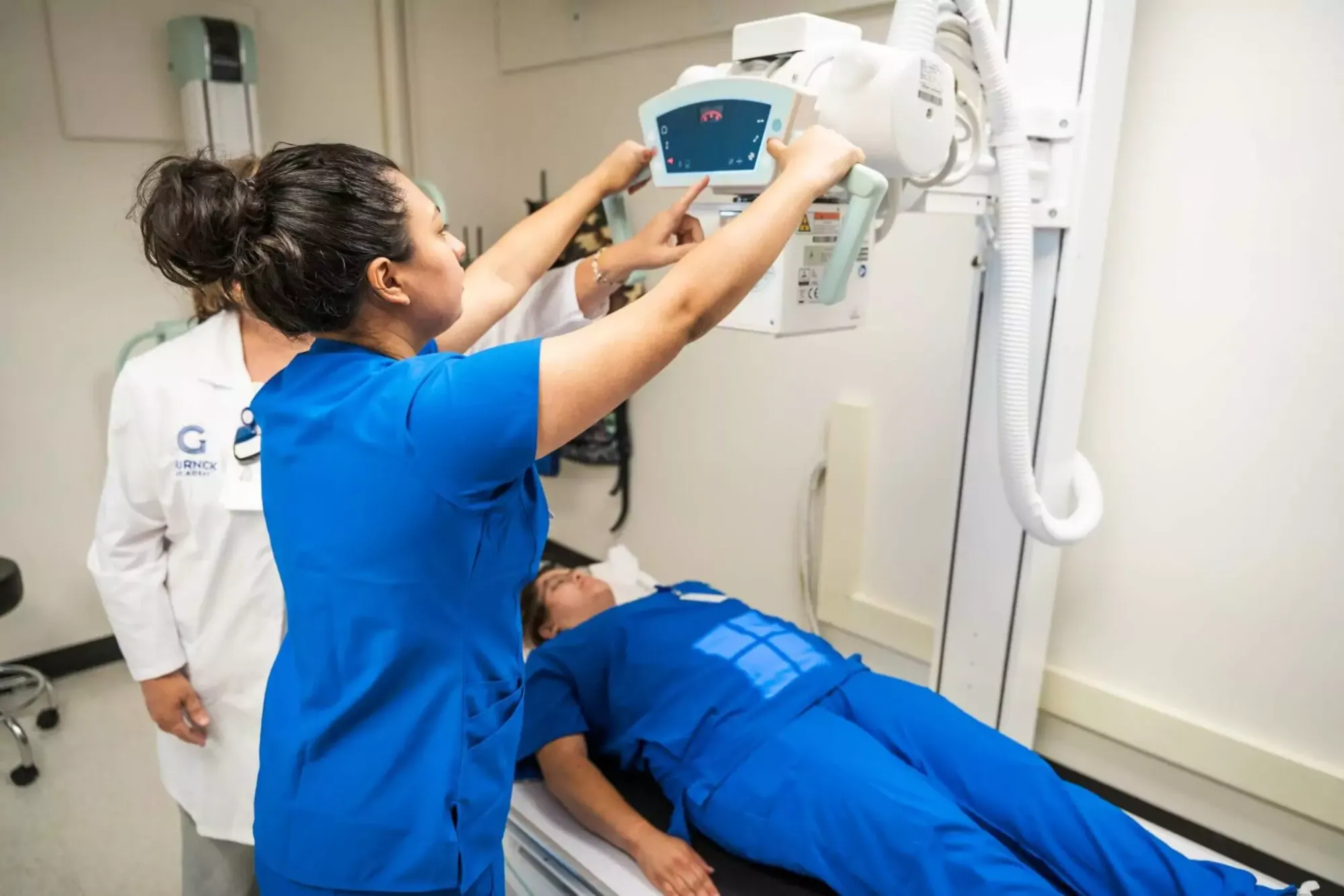An X-ray technician, often referred to as a radiologic technologist or X-ray tech, plays a critical role in the medical field. They operate X-ray machines to capture images of the human body that aid doctors in diagnosing and treating various conditions. In this guide, we’ll explore what an X-ray tech does, the necessary education and training, job outlook, salary expectations, and much more.
What Does an X-Ray Tech Do?
An X-ray tech is responsible for producing clear and accurate X-ray images that physicians use to diagnose injuries and diseases. These professionals are also tasked with ensuring patient safety during procedures by minimizing radiation exposure. X-ray techs often work in hospitals, diagnostic imaging centers, and sometimes in private clinics.
Key Duties of an X-Ray Technician

- Prepare patients for X-ray procedures by explaining the process and positioning them correctly.
- Operate X-ray equipment to capture detailed images of the bones, tissues, and organs.
- Adjust and maintain X-ray equipment to ensure functionality.
- Minimize radiation exposure by using protective equipment and following safety guidelines.
- Review and evaluate the quality of X-ray images before sending them to the physician for analysis.
- Maintain accurate patient records and manage radiology reports.
Education and Certification Requirements
To become an X-ray tech, you’ll need to complete specific educational and training programs. Most aspiring X-ray technicians pursue a two-year associate’s degree in radiologic technology, which includes both classroom and clinical training. Some programs may offer a bachelor’s degree, but an associate’s degree is the most common pathway.
Step-by-Step Process to Becoming an X-Ray Tech
- Earn a high school diploma or GED: Basic education is essential, with a focus on subjects like biology, math, and physics.
- Complete an accredited radiologic technology program: This typically takes about two years and includes coursework in anatomy, patient care, radiation safety, and image evaluation.
- Get certified: After completing the program, students are required to pass a certification exam from organizations like the American Registry of Radiologic Technologists (ARRT). Certification is essential for licensure in many states.
- Apply for licensure: Depending on where you live, you may need a state license to work as an X-ray tech. Each state has different licensing requirements, so it’s important to check your local guidelines.
- Pursue continuing education: To maintain certification and licensure, X-ray technicians are often required to complete continuing education credits throughout their career.
X-Ray Tech Salary and Job Outlook
A career as an X-ray tech is rewarding, not only in terms of job satisfaction but also in terms of salary and job prospects. Salaries for X-ray technicians can vary depending on factors such as experience, location, and education level.
| Job Title | Median Annual Salary | Job Growth (2022-2032) |
|---|---|---|
| X-ray Technician | $64,840 | 6% (As fast as average) |
| Radiologic Technologist | $61,900 | 6% |
| MRI Technologist | $74,690 | 7% |
According to the U.S. Bureau of Labor Statistics, employment for X-ray technicians is expected to grow by 6% over the next decade, which is on par with the average growth rate for all occupations. This increase is largely due to an aging population that requires more diagnostic imaging services.
Factors Influencing Salary
- Location: X-ray techs working in larger cities or regions with a high cost of living often earn more than those in rural areas.
- Experience: Like many professions, experience plays a key role in salary increases.
- Specialization: Technicians who specialize in advanced imaging techniques, such as CT scans or MRI technology, tend to earn higher salaries.
- Employer: Hospitals tend to offer higher pay compared to smaller clinics or outpatient care centers.
Skills and Qualities of a Successful X-Ray Tech

Being an X-ray tech requires more than just technical knowledge of operating radiologic equipment. Below are some key skills and personal attributes that are crucial for success in this field:
Technical Expertise
X-ray techs must understand how to operate complex imaging equipment, including adjusting settings to capture the best possible image for the physician’s needs.
Attention to Detail
Accuracy is critical in this role. X-ray techs must ensure that images are clear and that patients are positioned properly to minimize the need for repeated scans.
Communication Skills
Since they work closely with patients, doctors, and other healthcare professionals, X-ray techs need strong communication skills. This is especially important when explaining procedures to patients who may be nervous.
Physical Stamina
X-ray technicians spend much of their day on their feet and may need to assist with moving or positioning patients, especially those with mobility challenges.
Empathy and Patient Care
Working in healthcare means interacting with patients who may be in pain or distress. Empathy and patience are essential qualities for anyone in the medical field, including X-ray technicians.
Career Advancement Opportunities
X-ray technicians have a variety of options for advancing their careers. With additional education and certification, you could move into more specialized areas of radiology, such as:
- Magnetic Resonance Imaging (MRI): Specializing in MRI technology involves working with magnetic imaging machines to capture detailed images of internal organs and tissues.
- Computed Tomography (CT): CT technologists operate machines that take multiple X-ray images from different angles to create a more comprehensive view of the body.
- Mammography: Mammography technologists specialize in capturing images of the breast to screen for or diagnose breast cancer.
- Radiology Management: With experience and leadership training, X-ray techs can move into administrative roles overseeing radiology departments.
Working Environment
X-ray technicians typically work in healthcare settings, including hospitals, outpatient care centers, diagnostic labs, and physician offices. The work environment is fast-paced, and shifts can vary depending on the facility. In hospitals, X-ray techs may work evenings, nights, weekends, or on-call shifts.
Common Working Conditions Include
- Long periods of standing: Techs may spend most of their shift on their feet, preparing patients and operating machinery.
- Exposure to radiation: While safety protocols and protective gear minimize exposure, X-ray techs are still at risk for radiation exposure, making it essential to follow all safety procedures.
- High demand for precision: Errors in image quality can affect a patient’s diagnosis, so attention to detail is critical.
FAQs
How long does it take to become an X-ray tech?
It typically takes about two years to complete an accredited associate degree program in radiologic technology. After completing the degree, additional time may be needed to pass the certification and licensure exams.
What are the working hours like for an X-ray tech?
X-ray techs usually work full-time hours, which can include evenings, weekends, and even on-call shifts, especially in hospital settings. Some clinics may offer more regular daytime hours.
Is there a high demand for X-ray technicians?
Yes, the demand for X-ray techs is expected to grow by about 6% over the next decade, driven by an aging population that requires more medical imaging services.
Can X-ray techs specialize in other areas?
Yes, X-ray technicians can pursue further certification to specialize in areas such as MRI, CT scanning, or mammography, which often lead to higher pay and more career opportunities.
Is it necessary to renew X-ray tech certification?
Yes, to maintain ARRT certification, X-ray techs must renew their certification every two years by completing continuing education requirements.



